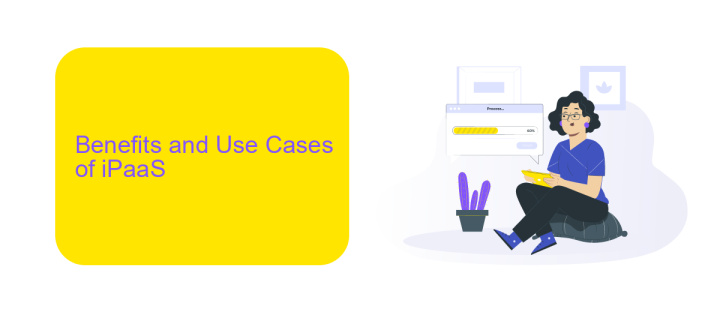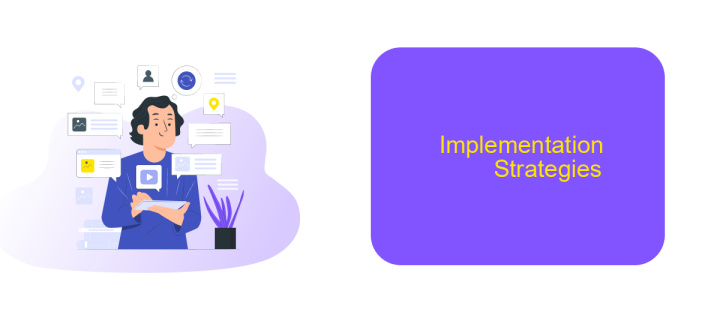iPaaS Training
In today's rapidly evolving digital landscape, Integration Platform as a Service (iPaaS) has become a crucial tool for businesses seeking seamless connectivity and data integration. iPaaS training equips professionals with the skills needed to leverage these platforms effectively, ensuring efficient workflows and enhanced productivity. This article delves into the essentials of iPaaS training, highlighting its importance and the key competencies it imparts.
Introduction to iPaaS
Integration Platform as a Service (iPaaS) is a cloud-based solution designed to integrate various applications, data, and processes across different environments. It enables businesses to streamline their operations by connecting disparate systems and automating workflows, thus enhancing overall efficiency and productivity.
- Seamless integration of on-premises and cloud-based applications
- Automated data synchronization and transformation
- Scalability to accommodate growing business needs
- Enhanced security and compliance features
- Cost-effective and time-saving solution
One notable iPaaS provider is ApiX-Drive, which offers a user-friendly platform to set up integrations without the need for coding. ApiX-Drive supports a wide range of applications and services, making it an ideal choice for businesses looking to automate their workflows and improve data accuracy. By leveraging iPaaS solutions like ApiX-Drive, organizations can achieve seamless connectivity and operational efficiency.
Benefits and Use Cases of iPaaS

iPaaS (Integration Platform as a Service) offers numerous benefits, including streamlined integration processes, reduced operational costs, and enhanced data flow management. By centralizing integration efforts, iPaaS platforms eliminate the need for complex point-to-point integrations, allowing businesses to connect various applications seamlessly. This results in improved efficiency and agility, enabling organizations to respond swiftly to market changes. Additionally, iPaaS solutions often come with pre-built connectors and templates, which simplify the integration process and reduce the time required to deploy new applications.
One notable use case of iPaaS is in automating business workflows. For instance, ApiX-Drive, a leading iPaaS provider, enables businesses to automate data transfer between CRM systems, marketing platforms, and other enterprise applications without requiring extensive coding knowledge. This automation not only saves time but also minimizes errors associated with manual data entry. Another common use case is in enhancing customer experiences by integrating customer data from various touchpoints, providing a unified view of customer interactions. This holistic approach allows businesses to deliver personalized services and improve customer satisfaction.
Key Features and Considerations

When considering iPaaS (Integration Platform as a Service) training, it's essential to understand the key features and considerations that can impact your integration projects. iPaaS solutions streamline the process of connecting various applications and data sources, making it crucial to choose a platform that aligns with your business needs.
- Ease of Use: Look for platforms with intuitive interfaces and user-friendly design to minimize the learning curve.
- Scalability: Ensure the iPaaS solution can scale with your business as it grows, handling increased data volumes and more complex integrations.
- Pre-built Connectors: Platforms like ApiX-Drive offer numerous pre-built connectors, simplifying the integration process with popular applications and services.
- Security: Verify that the platform provides robust security features, including data encryption and compliance with industry standards.
- Support and Documentation: Comprehensive support and detailed documentation are vital for troubleshooting and maximizing the platform's potential.
Choosing the right iPaaS platform involves assessing these features to ensure seamless integration and efficient data flow across your systems. Platforms like ApiX-Drive can significantly reduce the complexity of integration projects, providing a reliable foundation for your business operations.
Implementation Strategies

Implementing an iPaaS solution involves several critical strategies to ensure seamless integration and optimal performance. First, it's essential to conduct a thorough assessment of your current systems and workflows to identify integration needs and potential challenges. This helps in selecting the right iPaaS platform that aligns with your business objectives.
Next, prioritize data security and compliance by ensuring that the chosen iPaaS solution adheres to industry standards and regulations. This is crucial for protecting sensitive information and maintaining trust with stakeholders. Additionally, effective monitoring and management of integrations are vital to prevent disruptions and ensure smooth operations.
- Assess current systems and workflows
- Ensure data security and compliance
- Monitor and manage integrations effectively
Tools like ApiX-Drive can significantly simplify the implementation process by offering user-friendly interfaces and robust integration capabilities. By leveraging such services, businesses can automate data flows between various applications, reducing manual efforts and enhancing operational efficiency. Ultimately, a well-executed iPaaS implementation strategy can drive innovation and streamline business processes.
Best Practices and Future Trends
Implementing best practices in iPaaS (Integration Platform as a Service) involves a few key strategies. Firstly, it's crucial to maintain a centralized management system for all integrations to ensure seamless coordination and monitoring. Utilizing services like ApiX-Drive can greatly simplify this process by providing a user-friendly platform for managing and automating integrations without the need for extensive coding knowledge. Regularly updating and documenting all integration processes is also essential to maintain system integrity and facilitate troubleshooting.
Looking towards future trends, the iPaaS landscape is poised to evolve with advancements in artificial intelligence and machine learning. These technologies will enable more intelligent and predictive integration solutions, enhancing the ability to anticipate and resolve potential issues before they impact operations. Additionally, the rise of low-code and no-code platforms will continue to democratize integration capabilities, allowing a broader range of users to build and manage integrations. As businesses increasingly adopt cloud-based solutions, the demand for robust and scalable iPaaS solutions like ApiX-Drive will only grow.


FAQ
What is iPaaS?
Who can benefit from iPaaS training?
What are some common use cases for iPaaS?
What skills are typically covered in iPaaS training?
How do I get started with implementing iPaaS solutions?
Strive to take your business to the next level, achieve your goals faster and more efficiently? Apix-Drive is your reliable assistant for these tasks. An online service and application connector will help you automate key business processes and get rid of the routine. You and your employees will free up time for important core tasks. Try Apix-Drive features for free to see the effectiveness of the online connector for yourself.

